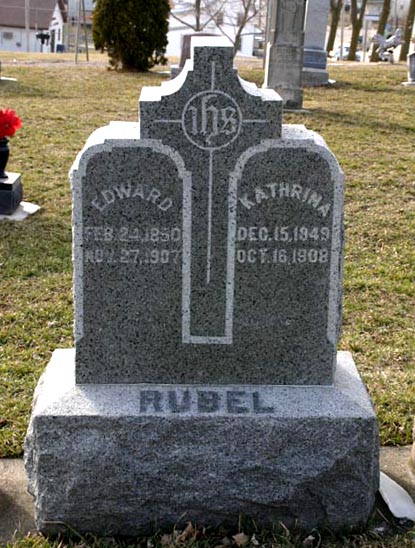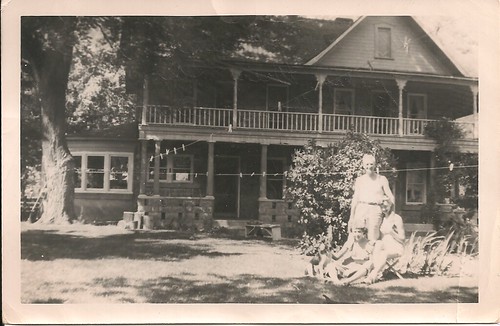 |
| Edward Morrison Kline and his granddaughters, Shirley and Rita Kline. |
Genealogy is often like a solving a mystery. You find clues, piece them together, and hopefully what you end up with is a story of where you came from. One of the longest mysteries I have worked on is Edward Morrison Kline Sr. When I began researching him, I knew his birth and death dates. I knew he was married to a woman named Bessie Goodspeed. But even this small amount of information seemed troublesome. For instance, Edward and Bessie were married in 1920, but my great grandfather, Edward Morrison Kline Jr, was born in 1912. So I knew that a rather important piece was missing, who was his first wife, Ed’s biological mother, and my great-great-grandmother?
Edward Morrison Kline was born February 13th, 1893 to John Kline and Mary Ella Wetmore. Little is still known about his younger life though he did suffer loss early on. John, his father, died in 1897 from heart trouble leaving Ella with 2 young sons. The three of them lived with Ella’s father, Isaac P. Wetmore, for a time before Ella remarried. Edward got a job with the New York Central Railroad and within a few years his life had changed dramatically. On March 4, 1912 Edward married Lena Pearl Martin, and shortly after they had their first child, Edward Morrison Kline Jr. In 1914 and 1916 Helen and William (Bill) followed.
1918 was a tragic year. Not just for this family, but for a community and the world. The 1918 Influenza Pandemic, often referred to as the Spanish Flu, killed more people and was farther reaching than World War I. This disease had touched every part of the globe. Oswego, New York was especially susceptible because of its place as a significant port on the Great Lakes. In September 1918 the virulent strain reached the U.S. shores and by the first week of October, the disease struck approximately 3,500 of Oswego’s 23,000 population. Many of those who died contracted pneumonia.
I don’t know the exact cause of death, but in the early morning of October 21st, 1918, at age 25, Lena Kline passed away from what her and many others’ obituaries called “a short illness”.
By 1920 the family had spread apart somewhat. Edward (Sr.) was living in Minnesota with his mother’s sister Anna and her husband and would marry his 2nd wife, Bessie that same year. The kids were boarded back in Oswego by Fred and Cornelia Vincent who do not appear to be any relation to the family.
By 1930 Edward (Jr), now 18, had moved out to Portland where Edward (Sr) and Bessie were living but the two younger children had not come. Helen never came out to Oregon but married Salvatore Lombardo of Syracuse, New York. William enlisted into the military in WWII, but later settled in Oregon.
Perhaps the answer is as simple as they did not want to uproot the children after losing their mother, but until I find the answer I will always wonder about this piece of the puzzle, why the family separated.

